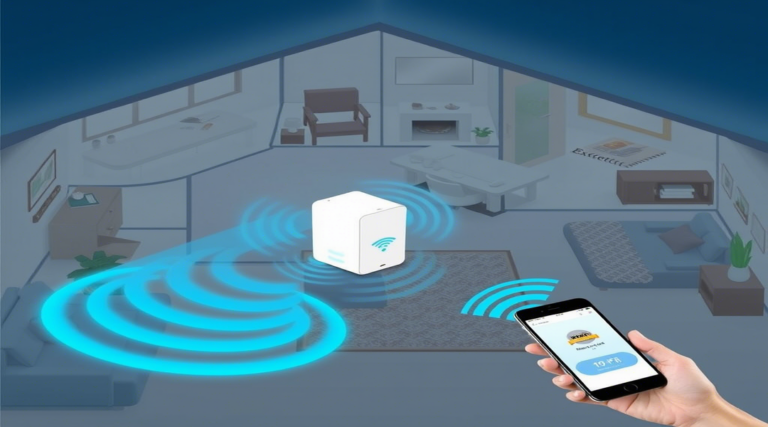Network Security: Top 15 Solutions for Small Business Owners
In today’s hyper-connected business landscape, network security isn’t just an IT concern—it’s a fundamental business requirement. Small businesses are increasingly becoming targets for cybercriminals, with a shocking 43% of all cyber attacks specifically targeting small businesses according to recent data from Verizon’s Data Breach Investigations Report. Even more alarming, the average cost of a data breach for small businesses now exceeds $200,000—a figure that could be catastrophic for companies operating on slim margins.
As digital transformation accelerates across all industries, the attack surface for potential breaches expands exponentially. Cloud migration, remote work environments, and IoT integration have created new vulnerabilities that cybercriminals are eager to exploit. Small business owners often mistakenly believe they’re “too small to target,” when in reality, their typically weaker security infrastructure makes them ideal prey.
The good news? Implementing robust network security doesn’t require enterprise-level resources. With strategic planning and the right solutions, small businesses can significantly strengthen their digital defenses. By taking proactive steps today, you can protect your valuable data, maintain customer trust, and ensure business continuity in the face of evolving threats.
Table of Contents
What is Network Security?
Network security encompasses all the technologies, processes, and policies designed to protect the integrity, confidentiality, and accessibility of computer networks and data. Think of network security as the comprehensive security system for your digital business headquarters—it includes everything from the locks on the doors (firewalls) to the security cameras (monitoring systems) and alarm systems (intrusion detection).
At its core, network security aims to create a protected environment where your business data remains safe from unauthorized access while still being readily available to legitimate users. It defends against a wide spectrum of threats—from external hackers to insider risks—using multiple layers of defense mechanisms that work in concert to identify, prevent, and respond to potential security incidents.
Ready to fortify your business against digital threats? Let’s explore why network security deserves your immediate attention.
Why You Need Network Security
1. Protection Against Cyber Threats
Today’s cyber threats are more sophisticated and damaging than ever before. Small businesses face a barrage of attacks including:
- Ransomware attacks that encrypt critical business data and demand payment for its release—as witnessed in the Colonial Pipeline attack that paralyzed operations and cost millions in damages
- Phishing campaigns that trick employees into revealing sensitive information or installing malicious software—these attacks increased by 62% in the past year alone
- Man-in-the-middle attacks that intercept communications between your systems to steal data or credentials
- DDoS attacks that overwhelm your servers and network infrastructure, bringing your online operations to a standstill
Without proper network security, your business essentially operates with its digital doors wide open to these threats, putting everything from intellectual property to customer data at risk.
2. Financial and Data Security Benefits
The financial implications of strong network security extend far beyond avoiding ransom payments. Consider these benefits:
- Preventing data breaches saves the enormous costs associated with incident response, legal fees, regulatory fines, and reputation management
- Protecting intellectual property maintains your competitive advantage and prevents revenue loss
- Securing financial transactions and customer payment information prevents fraud and associated chargebacks
- Maintaining business continuity avoids costly downtime—studies show that downtime can cost small businesses anywhere from $8,000 to $74,000 per hour
The ROI on network security investments becomes clear when compared to the potential financial devastation of a successful attack.
3. Compliance with Security Regulations
Regulatory compliance isn’t optional for businesses handling sensitive data:
- GDPR imposes penalties of up to €20 million or 4% of global annual revenue for non-compliance with data protection requirements
- HIPAA violations can result in fines ranging from $100 to $50,000 per violation for healthcare-related businesses
- PCI DSS compliance is mandatory for any business accepting credit card payments, with non-compliance potentially resulting in increased processing fees or termination of card processing privileges
- Industry-specific regulations like SOX, GLBA, and CCPA impose additional requirements depending on your business sector
Network security solutions help ensure your business meets these compliance requirements, avoiding penalties while also building customer trust through demonstrated commitment to data protection.
How to Implement Network Security
Quick Overview
A robust network security system combines multiple protective layers working in harmony. The foundation typically includes strong firewalls to filter network traffic, encryption to protect data in transit and at rest, and authentication protocols to verify user identities. These core elements are supported by regular security patching, continuous monitoring for suspicious activities, and comprehensive security awareness training for all employees.
Remember that network security isn’t a one-time implementation but an ongoing process requiring regular updates and adjustments to counter evolving threats. The most effective approach combines technological solutions with human vigilance and clear security policies.
Key Components of Network Security
1. Firewalls
Firewalls serve as the first line of defense by monitoring and filtering incoming and outgoing network traffic based on predetermined security rules. Small businesses should implement next-generation firewalls (NGFWs) that go beyond basic packet filtering to include application-level inspection, intrusion prevention, and malware detection capabilities. Solutions like Barracuda firewall offer comprehensive protection specifically tailored to small business needs, balancing security with ease of management.
2. Intrusion Detection and Prevention Systems (IDPS)
IDPS solutions continuously monitor network traffic for suspicious activities and known attack patterns. When threats are detected, they can automatically take preventive actions and alert security teams. These systems act as your network’s security cameras, identifying potential breaches in real-time before significant damage occurs.
3. Virtual Private Networks (VPNs)
VPNs create encrypted connections over public networks, ensuring secure remote access to your business resources. This is especially critical for businesses with remote or traveling employees who need to access company data from various locations while maintaining security. A quality business VPN ensures that sensitive data remains encrypted and protected even when accessed over public Wi-Fi networks.
4. Endpoint Security Solutions
With the proliferation of devices connecting to your network, endpoint protection is essential. Comprehensive endpoint security includes antivirus software, anti-malware protection, device encryption, and application control to ensure that every device becomes a security asset rather than a vulnerability.
5. Multi-Factor Authentication (MFA)
MFA significantly strengthens access security by requiring multiple verification methods before granting system access. By combining something the user knows (password), something they have (security token), and/or something they are (biometric verification), MFA dramatically reduces the risk of unauthorized access even if credentials are compromised.
6. Data Encryption
Encryption transforms readable data into coded text that can only be deciphered with the correct encryption key. Implementing both at-rest encryption (for stored data) and in-transit encryption (for data being transferred) ensures protection across your entire data lifecycle, rendering information useless to unauthorized individuals even if they manage to access it.
7. Security Information and Event Management (SIEM)
SIEM systems collect and analyze security data from across your network, providing real-time visibility into potential security threats. These solutions aggregate logs from various sources, correlate events, identify patterns indicative of security incidents, and generate automated alerts when suspicious activities are detected.
8. Network Segmentation
Dividing your network into separate segments limits the spread of breaches and contains threats to specific areas. By implementing proper network segmentation, you ensure that even if attackers gain access to one segment, they can’t move laterally through your entire network—significantly limiting potential damage.
9. DNS Security
DNS protection blocks connections to known malicious websites and prevents DNS hijacking attacks. This layer of security helps prevent phishing attempts and blocks communication between infected devices and command-and-control servers used by attackers.
10. Email Security Gateways
With phishing remaining the most common attack vector, email security solutions filter out malicious messages, block dangerous attachments, and identify suspicious links before they reach your employees’ inboxes.
11. Wireless Network Security
Securing wireless networks with strong encryption (WPA3), separate guest networks, hidden SSIDs, and MAC address filtering prevents unauthorized access to your network through vulnerable Wi-Fi connections.
12. Regular Vulnerability Scanning
Automated scanning tools identify security weaknesses in your network infrastructure before attackers can exploit them, allowing for proactive remediation of potential entry points.
13. Patch Management Systems
Automated patch management ensures that all software and systems receive security updates promptly, closing known vulnerabilities before they can be exploited.
14. Access Control Systems
Implementing the principle of least privilege ensures users have only the access necessary for their job functions, minimizing the potential impact of compromised credentials.
15. Security Awareness Training
Technical solutions alone aren’t enough—regular training transforms employees from security liabilities into human firewalls capable of recognizing and responding appropriately to social engineering attempts and other threats.
Step-by-Step Guide to Strengthening Network Security
1. Conduct a Comprehensive Security Assessment
- Inventory all network assets, software, and systems
- Identify current security measures and gaps
- Conduct vulnerability scanning across all systems
- Document sensitive data locations and access points
- Consider hiring external security consultants for objective evaluation
2. Develop a Network Security Policy
- Create clear guidelines for acceptable use of company systems
- Define password requirements and update frequencies
- Establish protocols for handling sensitive data
- Document incident response procedures
- Ensure policies comply with relevant regulations
3. Implement Core Security Solutions
- Install and configure business-grade firewalls at network perimeters
- Deploy endpoint protection across all devices
- Enable encryption for data storage and transmission
- Set up centralized authentication systems with MFA
- Implement backup and disaster recovery solutions
4. Establish Security Monitoring
- Configure logging across all critical systems
- Implement a SIEM solution for centralized monitoring
- Set up alerts for suspicious activities
- Develop regular review processes for security logs
- Consider managed security services if in-house expertise is limited
5. Train Your Team
- Conduct baseline security awareness training for all staff
- Implement regular phishing simulations
- Provide role-specific security training for IT personnel
- Create a security-conscious culture with regular reminders
- Make reporting suspicious activities easy and rewarded
6. Test Your Defenses
- Perform regular penetration testing
- Conduct tabletop exercises for incident response
- Test backup and recovery procedures
- Validate security controls effectiveness
- Update security measures based on test results
7. Develop an Incident Response Plan
- Create clear procedures for different types of security incidents
- Assign specific roles and responsibilities
- Establish communication protocols during incidents
- Document steps for containment, eradication, and recovery
- Plan for business continuity during security events
What to Combine Network Security With
Cloud Security Solutions
As businesses increasingly migrate to cloud environments, integrating cloud security with traditional network security becomes essential. Cloud access security brokers (CASBs), cloud workload protection platforms, and cloud security posture management tools ensure that your security extends seamlessly from on-premises systems to cloud deployments, maintaining consistent protection across your entire IT ecosystem.
Zero Trust Architecture
The zero trust model operates on the principle of “never trust, always verify,” requiring strict identity verification for every person and device attempting to access resources, regardless of whether they’re inside or outside the network perimeter. When combined with robust network security, zero trust significantly reduces the risk of lateral movement by attackers who manage to bypass perimeter defenses.
AI-Powered Threat Detection Systems
Artificial intelligence and machine learning enhance network security by identifying patterns and anomalies that might indicate attacks, even when they don’t match known threat signatures. These technologies continuously learn from new data, improving detection capabilities over time and helping security teams prioritize responses to the most critical threats first.
Cyber Hygiene Training for Employees
Technical solutions must be complemented by human awareness. Regular security training transforms employees from potential vulnerabilities into active defenders. When combined with technical network security measures, well-trained employees create a human firewall that can recognize social engineering attempts, report suspicious activities, and follow security best practices consistently.
Top Tips for Strengthening Network Security
Password and Authentication Management
- Implement a password management solution for your organization
- Require complex passwords of at least 12 characters
- Enforce MFA for all accounts, especially those with administrative access
- Use biometric authentication where appropriate
- Implement single sign-on (SSO) solutions to reduce password fatigue
Firewall and VPN Configuration
- Segment networks using internal firewalls and VLANs
- Implement application-aware firewall rules that filter by program, not just port
- Regularly audit and update firewall rules, removing obsolete configurations
- Configure VPNs with split tunneling disabled when accessing sensitive resources
- Use site-to-site VPNs for secure branch office connectivity
Regular Security Testing
- Conduct quarterly vulnerability assessments of critical systems
- Perform annual penetration testing with different testing teams
- Test employee security awareness through simulated phishing campaigns
- Validate backup integrity through restoration testing
- Review third-party vendor security with regular assessments
Common Security Mistakes to Avoid
- Neglecting IoT device security in your network
- Failing to revoke access for departed employees promptly
- Using default credentials on network equipment
- Overlooking physical security of network infrastructure
- Assuming compliance equals security—it’s just the baseline
Storing and Managing Security Logs
Proper log management forms the backbone of effective security monitoring and incident response. Security logs provide critical information about system activities, authentication attempts, network traffic patterns, and potential security events. To maximize their value:
- Implement centralized log collection from all network devices, servers, applications, and security tools
- Configure appropriate retention periods based on compliance requirements and investigation needs (typically 6-12 months)
- Use log management solutions that support indexing and search capabilities for faster incident response
- Implement automated correlation rules to identify patterns indicating potential security incidents
- Establish regular log review processes, focusing on critical systems and unusual activities
- Ensure logs are stored securely with appropriate access controls and tamper-evident mechanisms
- Consider using managed security service providers (MSSPs) for 24/7 log monitoring if in-house resources are limited
SIEM solutions enhance log management by applying real-time analysis, correlation across multiple sources, and automated alerting based on predefined security rules. Modern SIEM platforms increasingly incorporate machine learning to detect anomalies that might indicate sophisticated attacks not matching known patterns.
FAQ about Network Security
What is the best firewall for small business?
The best firewall for small businesses balances robust security features with ease of management and cost-effectiveness. Barracuda firewalls are particularly well-regarded for small businesses, offering comprehensive protection including advanced threat prevention, secure SD-WAN capabilities, and cloud integration. Other excellent options include Fortinet FortiGate, SonicWall TZ series, and Cisco Meraki MX. When selecting a firewall, consider factors such as throughput needs, remote access requirements, integrated security features, and available IT management resources.
How do network security providers differ from general IT services?
Network security providers specialize specifically in protecting digital assets and infrastructure, focusing exclusively on security technologies, threat intelligence, and protective measures. Unlike general IT service companies that cover a broad range of technology needs, network security providers offer deeper expertise in threat detection, vulnerability management, compliance requirements, and incident response. They typically employ certified security professionals, maintain current knowledge of emerging threats, and provide specialized services like penetration testing, security assessments, and 24/7 security monitoring that general IT firms may not offer with the same level of sophistication.
What network protection measures should be prioritized for businesses with limited budgets?
For budget-conscious businesses, prioritize these network protection essentials: First, implement business-grade firewalls with unified threat management capabilities. Second, ensure endpoint protection with modern antivirus/anti-malware on all devices. Third, enable MFA wherever possible, especially for critical systems and email. Fourth, implement automated backup solutions with offline copies. Fifth, conduct basic security awareness training for all employees focusing on phishing recognition. These fundamental measures address the most common attack vectors while maximizing security return on investment.
How often should network security solutions be updated?
Network security solutions require different update frequencies: Security software patches should be applied as soon as possible after release—ideally within 72 hours for critical vulnerabilities. Antivirus/anti-malware signature databases should update automatically at least daily. Firewall rules and configurations should be reviewed quarterly and after any significant network changes. Security policies should undergo annual comprehensive reviews. Employee security training should occur at least twice yearly with monthly security reminders. Comprehensive security assessments should be conducted annually, with vulnerability scanning performed quarterly.
What are the most common network information security challenges for small businesses?
Small businesses frequently struggle with insufficient security expertise, leading to improper configuration of security tools. Limited budgets often result in inadequate security investments or reliance on consumer-grade solutions. Legacy systems that cannot be easily updated create persistent vulnerabilities. Poor employee security awareness makes social engineering attacks particularly effective. Inadequate backup and disaster recovery planning leaves businesses vulnerable to ransomware. Failure to implement basic security controls like MFA and encryption provides easy attack vectors. Finally, the misconception that small businesses aren’t targets leads to dangerous complacency.
How do I evaluate different network security solutions for my specific business needs?
To evaluate network security solutions effectively, start by documenting your specific requirements based on your business type, regulatory obligations, sensitive data handled, and existing infrastructure. Create a security baseline assessment to identify current gaps. Request demonstrations focusing on your specific use cases rather than generic presentations. Consider total cost of ownership including licensing, implementation, training, and ongoing management. Verify vendor support capabilities and response times. Check references from businesses similar to yours. For complex evaluations, consider engaging an independent security consultant to provide unbiased guidance tailored to your situation.







